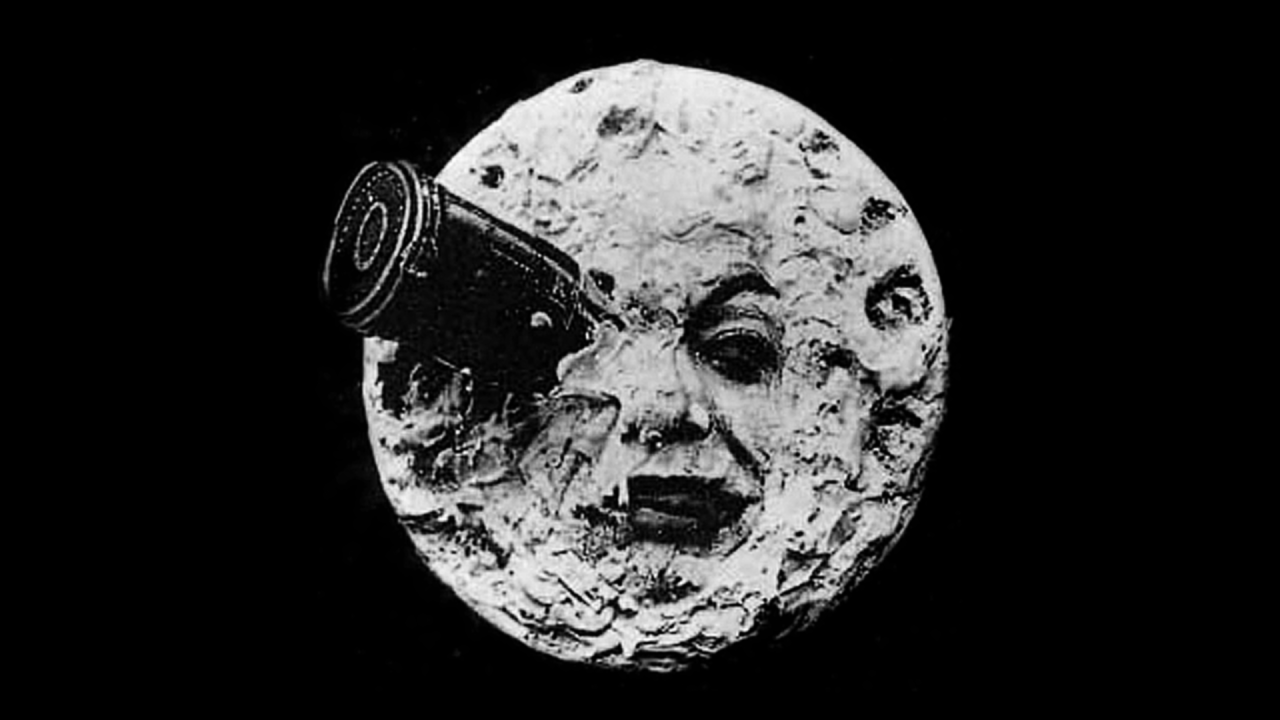
Decades later Georges Méliès’s A Trip to the Moon (1902) used this inspiration for its striking image of the (potentially) blinding consequences of explosive extraterrestrial excursion.
But this was not the only option for our journey. H.G. Wells offers up the gravity-defying cavorite as the mode of travel for the adventures of The First Men in the Moon (1902)—perhaps feeling that an artillerial approach was better suited to mysterious landscapes of the Martian world. And despite the unwelcome intrusion of the mundane details of reality, the intimate closeness of our sullen satellite still retains the forceful demand of directness that Verne had seen over a century ago, just as Méliès’s realization of the fantastical wonder of the world beyond our own continues to exert an influence on the one we more generally inhabit.


